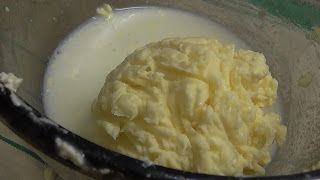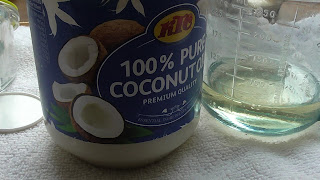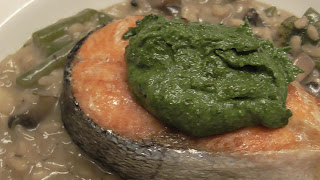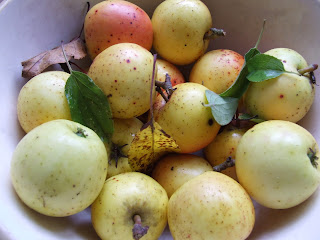Delicious
Well what can I say!
Don't go out and buy your butter. Instead wait until you see double cream going cheap at your local supermarket (when it needs to be purchased that day) and you have bagged yourself a winner. I eat butter all the time and it costs me ...hmm 20 pence. I have such an exciting time creating my own butters and adding seasonal herbs for many culinary uses. This adorable butter has been made from the winter herbs hanging around my garden. This is ridiculously easy and so so cheap. Give it a go. Honest you will love it.
 |
| Fig.1.L.Moore Garden Butter |
A pot of double cream
Salt to taste (and preserve)
Dried Herbs of your choice (I used Sage, Marjoram, Thyme, approx 1-2 TBS)
A whisk
A bowl
A Spatula
In a bowl pour in your double cream and start to whisk. Keep whisking for approximately 15 mins. Don't give up... keep going. It will go through a few stages. First it will start to change colour (turning a yellow colour) and then it will begin to separate... keep whisking until the solids and the liquids separate. This is where you get the buttermilk. In your bowl you should end up with a sticky yellow clump of butter and the buttermilk should be at the bottom of the bowl.
Now you need to squeeze the buttermilk out of the lump of butter. Don't do it with your hands as it's best to keep the butter cold so I used two wooden spoons to squash it together. You could use muslin and squeeze if you wanted to. When you have all the buttermilk out of the butter then place it on board (I used a bread board) and add your dry chopped herbs. Use a spatula if you like and mix in the herbs on the board turning the butter over with your knife or spatula. Now add your salt (the amount is up to you). If you like salty butter you might like to use rock salt so it crunches when you spread it or any other kind of salt you fancy.
I then rolled mine in grease-proof paper to make a nice sausage shape. You can chop your butter into slices and freeze it for future cooking or you can put it in the fridge and use as and when you need it. This is great for cooking fish and risottos. There are so many ways you can make this super tasty. You could add garlic and chilli or anything else that teases your taste buds. I have used this many times for cooking and also spreading on fresh bread, yum! It last as good couple of weeks refrigerated.
 |
| Fig.2. L.Moore Whisking double cream |
 |
| Fug.3.L.Moore Double cream getting thick |
 |
| Fig.4. L.Moore Buttermilk oozing out |
 |
| Fig.5. L.Moore Drained butter and add herbs/salt |
 |
| Fig.6. L.Moore Wrapped and ready to eat |
So next time you are cruising the aisles in your supermarket and you see double cream going cheap then buy it and try it.
Enjoy ... Ta Dah!







































